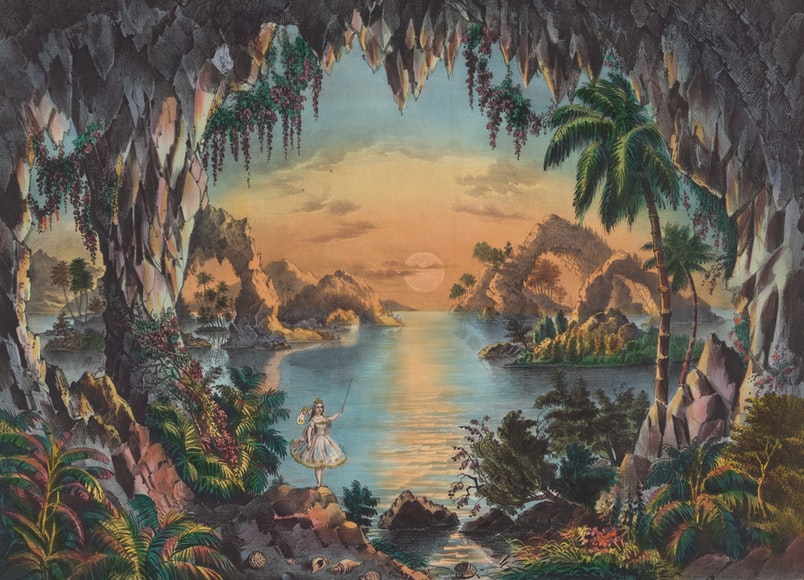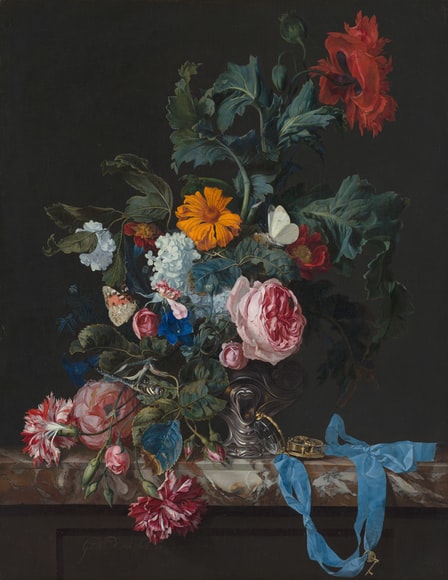The calming nature of art is a topic that has been studied for decades. Paintings, sculptures, and photographs can all help relax people because they provide them with an escape from their daily lives through sight alone.
Art can be a way to express emotions, feelings, and ideas. There are many different types of art that may work best for viewing, depending on one’s moods or what's going on in life at the time. To find art that can soothe and calm isn’t difficult. There are so many different types of art that can do this. We’ve compiled a list of various art movements in painting that can bring peace to a viewer.
For those who want more time to look at artworks, maybe you’ve asked yourself, “Are there people I can hire to do my online homework for me?” The answer is yes. And they can do it for very fair prices too. Just head on over to Studyfy’s website and get in touch with an expert writer. You’ll have more time for art!
Moving on, here’s our list of art movements that can soothe the mind.
1. Impressionism
Popular Example: Claude Monet’s ‘Water Lilies’ (the 1890s - 1920s)
Some of the most relaxing art is created by impressionist painters. Their work focuses on light, color, and movement to create an immersive experience that can help a viewer feel calm in their own world. Their own bubble.
The Impressionist movement was a response to the rigid notion that art should follow an idealized form. Paintings became more natural and human as they were used to show how light affected objects.
The term "impression" comes from French, which literally means "to make impressions". Impressionist artists would use their brushstrokes in different ways depending on what kind of feeling they wanted viewers to experience.
2. Magic Realism
Popular Example: Paintings by Eric Roux-Fontaine
Magic realism is the type of art that contains both fantasy and reality. It was invented by the German photographer and author/critic Franz Roh in 1925 to describe modern realist paintings with subjects like these; many people might not realize this but they are actually taking place in our world.
The term "magic" comes from the Spanish verb Mágico meaning enchanting or spellbinding while 'real' means true so when you combine them into one word (magical REALISM), what do we get? A way for artists across genres such as photography to bring their imagination onto paper without having any restrictions because everything can happen regardless of whether it's believable. Art in this genre can be extremely relaxing and stimulating for the imagination all at the same time.
3. Luminism
Popular example: Martin Heade’s ‘Sunlight and Shadow: The Newbury Marshes’ (1875)
Luminism is a very interesting style that comes from America. As you can probably tell from the name, its defining trait is how its followers work with light. It mostly deals with sceneries and you can easily spot a representative of luminism by a very soft-lit sky over a picturesque view.
Luminist landscapes emphasize tranquility rather than revealing too much detail so as not to disrupt this feeling with distracting details.
4. Abstract
Popular example: Helen Frankenthaler’s ‘Mountains and Sea’ (1952)
Abstract art is a type of decorated imagery that uses line and color to create compositions with no physical objects. It typically does not resemble anything in particular but rather represents feelings or ideas, something like an emotion without specific content.
A lot can be said about abstract paintings because they lack representational detail while still being attractive-looking pieces, which means there's always some level of hidden substance communicated through them; whether you understand it fully depends on what your beliefs happen to be.
Many different artists have created abstract art that is not necessarily representational. One example of this type would be Jackson Pollock's paintings, which are done in a dripping style with no clear imagery on the canvas until you get very close to them. The world of abstract art is expansive and ever-changing.

5. Romanticism
Popular example: Caspar David Friedrich’s ‘Wanderer above the Sea of Fog’
Romanticism is an artistic style that emphasizes beauty and sentimentality. It was prevalent in 19th century Europe, especially Britain where it reached its peak with Gothic novels like "Wuthering Heights" or "Jane Eyre." Romanticism in art reflects a time when artists were trying to capture the moods and feelings of their era.
A lot of the work from this time period has religious or mythological themes which are often infused with a sense that these subjects can transcend reality with beauty - they're not just for everyday life but there's something about them capable of making the viewer escape just by looking at it.
6. Classicism
Popular example: Frederic Leighton’s ‘Flaming June (1895)
The term classicism refers to an approach in art, literature, and architecture that was adhered to before World War II. The main influence on this style was ancient Greece with its focus on beautiful forms such as symmetry and balance; however, the fashion changed over time because of changing social norms.
Classicist pieces have been around for centuries and it's an excellent way to show Europe’s rich history. The styles and techniques used in various paintings can change dramatically, but there are some commonalities to be found across all different eras worth noting such as color palette or subject matter at least.
The beauty lies not just with what type of paint was applied but also by how detailed the brushstrokes were, which shows off each artist's individual style; many times these details will vary depending on the time period and other factors too.
Final Thoughts
It can be soothing to experience, view, and indulge in painting. Even though many things have become digitized, traditional creativity still lives on and can provide an enriching experience. That’s why we recommend our readers to visit a museum and see what local art is being exhibited. Those who aren’t particular fans might actually find a piece or two that they like.
And for those who are already art fans, it’s high time to get your mind off things and spend the day in leisure.
